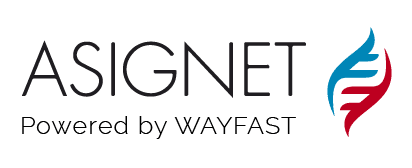Nowadays companies have a hard time reporting and/or quantifying productiveness profit from increased bandwidth, better mobile devices, and other benefits due to their concern on how to reduce IT Expenses.
Telecom Expense Management (TEM) vendors can help establish a baseline performance metric and identify the rise of capacity. Many tasks associated with TEM, Wireless Expense Management (WEM) and IT Asset Management (ITAM) may have been neglected, before they were implemented, ending in higher costs or wasteful spending on telecom services.
TEM and WEM solutions no longer focus exclusively on telecom expenses. Many solutions are addressing technology expenses and the management of data security. With the convergence of telecom and IT and mobile offerings, expansion into IT and security was a natural extension. In turn, the traditional focus of justifying these programs solely on cost savings is too limiting.
A sustainable return of investment (ROI), cost justification or business case must also consider the environment and costs prior to implementation.
Often there is no baseline of telecom expenses and operational costs associated with managing telecom. An accurate record of the costs before the implementation of the solution is essential to prove the solution reduced expenses. In addition, the network may have changed with:
- Growth – new subsidiaries, additional site locations, more employees, etc
- Capacity – adding additional bandwidth at locations
Before enterprises start to develop their ROI, cost justification and business case it is important to understand TEM, WEM and MMS solutions, areas where offerings may overlap and the areas that are unique to each.
TEM solution proactively reduce expenses, introduce new efficiencies, increase visibility, provide better control for telecom services and help improve security compliance.
TEM has ten major focus areas in its lifecycle:
- Inventory Management and Change Control
- Sourcing Management
- Procurement and Order Management
- Invoice management
- Expense Management: Validation and Optimization
- Usage Management and Chargeback
- Payment Processing
- Managed Mobility Services
- Reporting
- Business Intelligence
Some TEM Solutions Providers will go a step further adding telecom assets that do not appear on carrier bills. This could include mobile accessories, mobile software licenses, routers, network hardware, and other customer premise equipment.
Enterprises need to determine if TEM will cover domestic wireline, wireless, and/or international expenses. With Wireless Expense Management, enterprises must balance expense management with expectations of employees for mobile services that will help make them more productive and help desk support. Multi-national enterprises may seek to expand the program to manage international telecom expenses.
The three areas of fixed, mobile and international telecom expenses have challenges unique to each discipline. Telecom Service Providers use different billing systems for each discipline because regulations and revenue models vary for each of these services. Enterprises may also have different groups that manage these three areas.
As we know, WEM focuses on mobile expenses. TEM programs can include wireless expenses, but there are some areas of specialization for mobile programs. First, WEM programs’ inventory management and change control rely on employee portals for procurement and fulfillment of devices and service plans to manage on-boarding and off-boarding of employees.
Wireless services expense management saves organizations money by focusing on ongoing optimization of voice minutes, data plans, continual monitoring of new rate plans and selection of the best plans based on usage patterns.
WEM providers may also source the best contracts and manage a competitive bidding process with carriers. Invoice processing for mobile devices can even identify zero use devices which should be disconnected or suspended.
Similar to the TEM solution, invoice processing will also include steps to allocate costs and report usage to bring accountability for service consumption.
WEM Solutions Providers present a batch file of invoices that are ready for payment; upon approval by the enterprise the solutions provider can pay on behalf of the enterprise, or the enterprise can pay the bill and provide feedback to the provider to track payments.
Asignet brings these solutions in connection with IT Asset Management, making substantial cost savings, increased accuracy and visibility, substantial gains in control, productivity and efficiency, and complete traceability.
Executives are usually better positioned to secure resources and funding for these programs. Executive sponsorship will help drive the fastest adoption of TEM, WEM and ITAM offerings, which will help secure better returns and competitive advantage for the enterprise.
Contact us if you want to know more about our Solutions.






